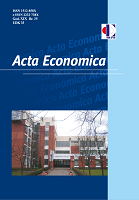
Let’s get positive: How foreign language teaching enjoyment can create a positive feedback loop
Let’s get positive: How foreign language teaching enjoyment can create a positive feedback loop
Keywords: foreign language teaching enjoyment (FLTE); mindfulness; engagement; burnout; EFL teachers
Research on learners’ foreign language emotions has revealed the existence of a positive feedback loop where increased enjoyment leads to better performance which, in turn, strengthens learners’ enjoyment and boosts overall happiness. The current study follows this avenue focusing on teachers’ foreign language teaching enjoyment (FLTE) and its relationships with engagement, mindfulness, and burnout. The participants, who were 496 English as a foreign language (EFL) teachers from Iran, completed four electronic surveys. The proposed mediation model based on data collected from EFL teachers indicated that FLTE partially mediated the relationship between mindfulness and engagement as well as their burnout. The results revealed that mindful EFL teachers who enjoy the profession are more likely to experience higher levels of work engagement and job satisfaction, thus creating a positive feedback loop. In addition, the findings suggest the importance of positive emotions in EFL teachers’ psychological flourishing based on the tenets of positive psychology. Finally, implications and suggestions for further research are offered.
More...



